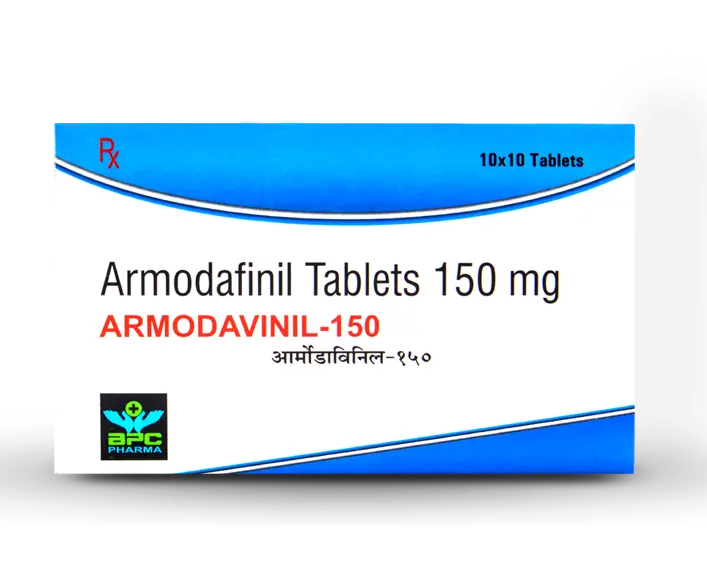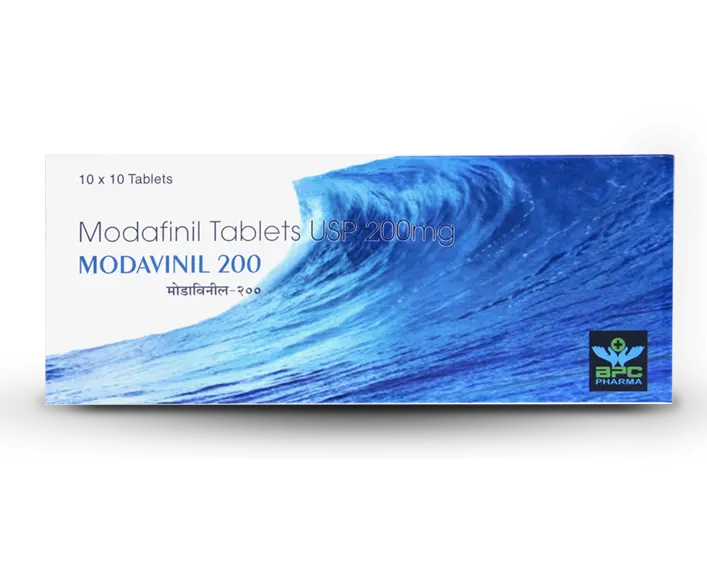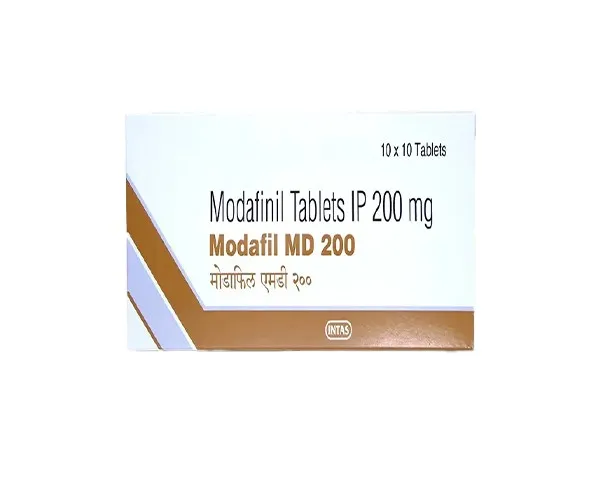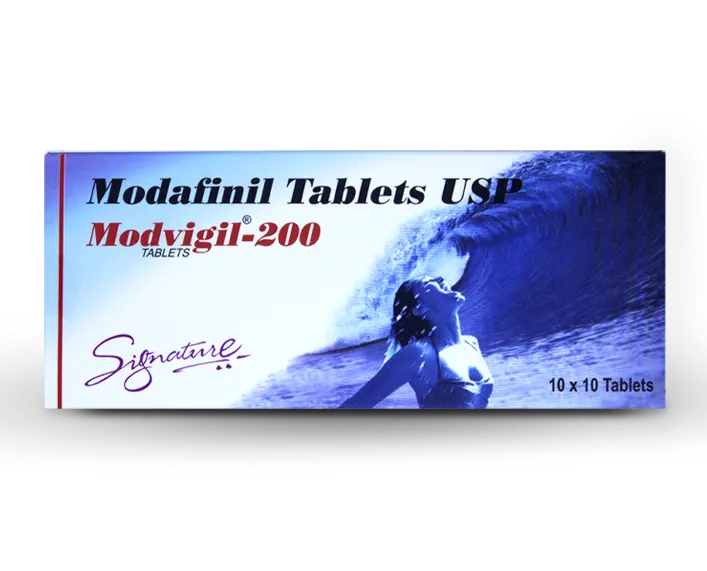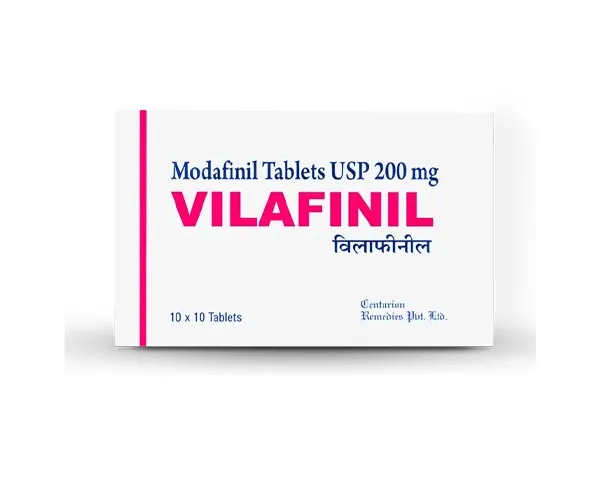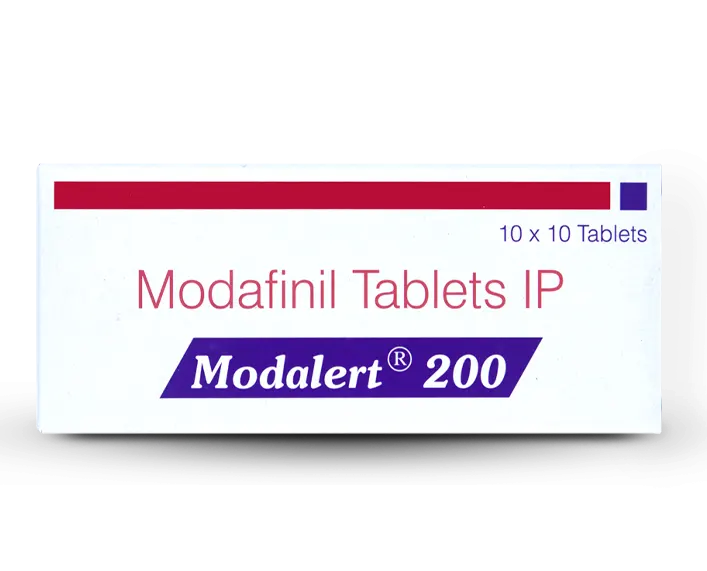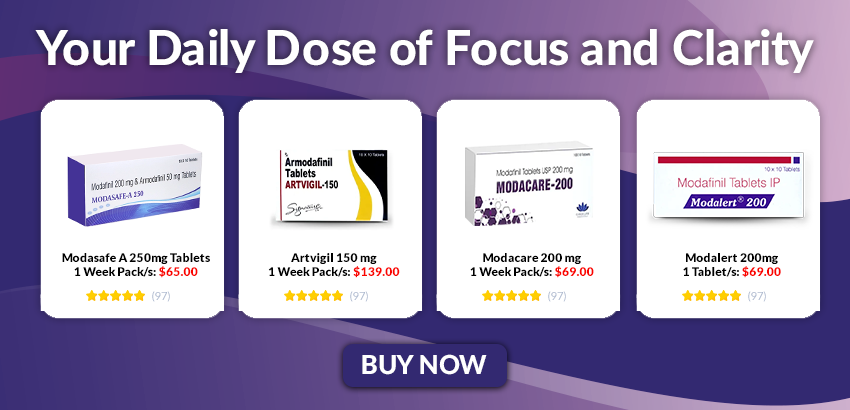Armodafinil vs Modafinil — Which One Should You Choose?

If you’re reading about “smart drugs” or hunting for safe ways to boost focus and wakefulness, you’ve probably run into the two big names:
modafinil (brand: Provigil) and armodafinil (brand: Nuvigil). This deep dive compares them head-to-head — pharmacology, effectiveness, safety, practical dosing, legal status, and which one might suit different goals. Think of it as a focused “Nootropics comparison” for people who care about real-world results and risks, not hype about miracle pills.
Quick Summary
- Both drugs are wakefulness-promoting prescription medicines used for narcolepsy, shift-work sleep disorder, and excessive sleepiness from obstructive sleep apnea.
- Armodafinil is the single R-enantiomer of modafinil and tends to give a longer, steadier effect in the morning; modafinil is the racemic mixture (R + S) and has slightly different early-day kinetics.
- For most medical uses, they’re clinically similar in benefit; choice often comes down to dosing preference, how long you need to stay alert, side-effect sensitivity, cost, and how your body reacts.
Best sellers
-
Armodavinil 150mg
$69.00 – $395.00Price range: $69.00 through $395.00Shop Now This product has multiple variants. The options may be chosen on the product page -
Modavinil 200mg
$69.00 – $395.00Price range: $69.00 through $395.00Shop Now This product has multiple variants. The options may be chosen on the product page -
Modafil Md 200 mg
$69.00 – $345.00Price range: $69.00 through $345.00Shop Now This product has multiple variants. The options may be chosen on the product page -
Modvigil 200mg
$65.00 – $395.00Price range: $65.00 through $395.00Shop Now This product has multiple variants. The options may be chosen on the product page -
Vilafinil 200 mg
$69.00 – $395.00Price range: $69.00 through $395.00Shop Now This product has multiple variants. The options may be chosen on the product page -
Modalert 200mg
$69.00 – $449.00Price range: $69.00 through $449.00Shop Now This product has multiple variants. The options may be chosen on the product page
What are these drugs — short primer
- Modafinil (Provigil) is a wakefulness-promoting agent approved in the late 1990s for narcolepsy, shift-work sleep disorder, and daytime sleepiness from obstructive sleep apnea. It’s a racemic mixture of two mirror-image molecules (R- and S-modafinil).
- Armodafinil (Nuvigil) is simply the R-enantiomer of modafinil, developed and approved later (2007). Because it’s a single isomer, its blood levels and activity differ in predictable ways from the racemate. Both are non-amphetamine stimulants and are controlled prescription medicines.
How they work (neuropharmacology)
Neither drug is a classic amphetamine; they don’t release large amounts of dopamine like older stimulants. Instead, they act on multiple brain systems linked to arousal — dopamine transport, orexin/hypocretin pathways, histamine circuits and possibly glutamate/GABA balance — producing sustained alertness with a relatively lower “jitter” profile compared with amphetamines. That mechanism is why clinicians consider them “productivity boosters” for sleep-related disorders and, off-label, sometimes for cognitive complaints.
Pharmacokinetics: what makes them different
This is where the real “Armodafinil vs Modafinil” story lives.
- Single-isomer vs racemate: Armodafinil contains only the R-enantiomer; modafinil is 50/50 R and S. The S-isomer is cleared faster, so modafinil’s early plasma profile is a blend that changes as the S-isomer drops off. Armodafinil, by contrast, produces a more monotonic decline and steadier exposure.
- Half-life and duration: Studies show that the R-enantiomer tends to persist longer at effective levels; in practice, that can translate to a longer, smoother morning effect for armodafinil in some people (though terminal half-life estimates overlap and real-world differences are modest).
- Onset: Both drugs start working within 30–60 minutes for most users, but subjective experience varies. Some users feel a slightly faster “kick” with modafinil (because of the S-isomer), while armodafinil’s benefit may be more sustained.
These differences explain why some people prefer one drug over the other even though both achieve similar results: wakefulness and improved daytime function.
Clinical effectiveness — wakefulness and cognition
- In clinical trials for narcolepsy, OSA, and shift-work disorder, both drugs reduce objective sleepiness and improve functioning versus placebo. Meta-analyses combining trials of both agents show consistent benefit for daytime sleepiness.
- For cognition (the “nootropics” angle): controlled studies in healthy people and those with sleep loss show modest improvements on specific tasks — planning, attention, decision-making — but not a universal IQ-style boost. In short: they help you perform better on some measures, particularly when tired; they are not a universal brain-enhancer.
So in a practical “Nootropics comparison,” both drugs are solid if your main problem is sleepiness-related cognitive impairment. Their benefits for people who are already well-rested are smaller and more variable.
Dosing and equivalence (practical numbers)
- Typical modafinil dosing: 100–200 mg once daily (200 mg is commonly used for narcolepsy/OSA).
- Typical armodafinil dosing: 150–250 mg once daily (150 mg is a common starting dose for narcolepsy/OSA).
There isn’t a perfectly fixed mg-to-mg conversion because armodafinil is the R-enantiomer and is sometimes considered “more active per mg.” Clinicians usually follow labeled starting doses and adjust by symptoms and tolerability.
Side effects and safety — what to watch for
Both drugs are generally well tolerated compared with classic stimulants, but they’re not side-effect free:
- Common: headache, nausea, nervousness, insomnia, dry mouth, loss of appetite.
- Serious but rare: severe skin reactions (including Stevens-Johnson syndrome), psychiatric reactions (agitation, hallucinations), and allergic reactions — these require urgent medical attention. Both labels warn about rash and psychiatric symptoms.
- Interactions: both can affect liver enzymes (CYP induction/inhibition) and alter levels of other drugs (notably hormonal contraceptives, some anticonvulsants, and psychiatric meds). Check with a clinician or pharmacist.
Bottom line: neither drug is “risk-free,” and rare but severe adverse events are part of the reason both are prescription-only and monitored.
Legal status & availability
Both meds are prescription-only in most countries. In the United States they are classified as Schedule IV controlled substances (prescription required), and selling or buying outside regulated channels can be unlawful and risky because of counterfeits and unregulated suppliers. Always use legitimate pharmacies and clinician oversight.
Off-label & “smart drugs” use: the ethics and reality
There’s a booming off-label market for cognitive enhancement: students, professionals, and shift workers sometimes use modafinil/armodafinil as productivity boosters. Clinical evidence supports selective cognitive gains, especially in sleep-deprived individuals, but ethical, legal, and safety issues remain:
- Equity & coercion: easy access raises fairness questions (who can afford and who feels pressured to take them to compete).
- Long-term safety unknown: long-term data for healthy people are limited.
- Medical supervision: absence of medical oversight increases risks of interactions and missed contraindications.
If you’re evaluating modafinil or armodafinil as a “smart drug,” weigh immediate performance gain against these unresolved long-term questions and legal issues.
How to choose — practical guidance
Use this checklist to decide which may be better for you:
- Medical indication (narcolepsy, OSA, shift work) — follow labeled guidance and clinician advice; either drug can work.
- Need for sustained morning effect — people who want a steadier, longer morning wakefulness sometimes prefer armodafinil.
- Sensitivity to early “edge” effects — if you dislike a quick “rush” and prefer a smoother onset, many users favor armodafinil; if you want a slightly earlier effect, modafinil may feel that way.
- Cost and insurance — modafinil is older and generics are widely available; armodafinil generics are also available, but pricing can vary. Check coverage.
- Interactions & liver function — if you take multiple meds metabolized by CYP pathways, discuss specifics with your prescriber; both can have interactions.
In many cases, the “right” choice is the one that your prescriber and you decide after a short trial and careful monitoring.
Comparison Table: Armodafinil vs Modafinil Variants
Feature | Modafinil (Provigil, Modalert, Modvigil, Modawake, Modafresh) | Armodafinil (Nuvigil, Waklert, Artvigil, Armoda) |
Active Isomer | Racemic mixture (R- and S-enantiomers) | Pure R-enantiomer (more stable, longer-acting) |
Common Brand Names | Provigil (US), Modalert (Sun Pharma), Modvigil (HAB Pharma), Modawake, Modafresh | Nuvigil (US), Waklert (Sun Pharma), Artvigil (HAB Pharma), Armoda |
Half-Life | ~12–15 hours | ~15–18 hours (longer lasting) |
Onset of Action | 30–60 minutes | 45–90 minutes |
Duration of Effect | 8–12 hours | 12–15 hours |
Strengths Available | 100 mg, 200 mg (most common) | 50 mg, 150 mg, 200 mg, 250 mg |
FDA-Approved Uses | Narcolepsy, shift work disorder, obstructive sleep apnea | Narcolepsy, shift work disorder, obstructive sleep apnea |
Off-Label Uses | Cognitive enhancement, ADHD, fatigue in depression, MS-related fatigue | Similar off-label uses; sometimes preferred for longer coverage |
Side Effect Profile | Headache, nausea, anxiety, insomnia; generally mild | Similar to Modafinil but sometimes slightly more insomnia due to longer effect |
Cost (Generic) | Generally cheaper, widely available | Slightly more expensive than Modafinil generics |
Best Suited For | People who need a steady boost during the day without extremely long effects | People who want sustained alertness into late hours or have long shifts |
Risk of Insomnia | Moderate | Higher (if taken late in the day) |
Popularity Among Users | More widely used, older, more research available | Growing in popularity due to longer duration and smoother effect profile |
Case Study
Michael, a 34-year-old ER nurse in Chicago, often worked rotating night shifts that left him drained and struggling to stay alert. He was first prescribed Modafinil (Provigil 200 mg) to manage excessive sleepiness tied to his schedule. While it improved his focus, the effects wore off toward the end of his 12-hour shift, leaving him fatigued on the drive home. After consulting his sleep specialist, he switched to Armodafinil (Nuvigil 150 mg). The new medication gave him smoother, longer-lasting wakefulness that carried him through his shifts. However, he had to carefully time his dose to avoid difficulty falling asleep after work. Michael’s experience illustrates how individual needs and work patterns influence the best option.
Bottom line — when to pick which one
If you need a longer, smoother morning boost and tolerate the drug well, armodafinil is a reasonable first try. Modafinil is the logical choice if you prefer a long-standing generic option with a large evidence base and potentially lower cost. For medical sleep disorders, either is acceptable under guidance; for so-called “smart drug” use, be cautious — the evidence for large cognitive gains in healthy, rested people is modest and the legal/ethical landscape is complicated. Always use a prescription and medical supervision.
Safety & legal disclaimer
This article is for informational purposes only and not medical advice. Talk with a licensed clinician before starting, stopping, or switching any prescription medication. I can summarize the evidence and help you prepare questions to ask your prescriber if you want.
FAQs
Q: Are armodafinil and modafinil the same thing?
No — they’re closely related. Modafinil is a racemic mix (R + S); armodafinil is the R-enantiomer only. They have similar benefits but slightly different blood-level profiles.
Q: Which is stronger — armodafinil or modafinil?
Stronger” depends on what you mean. Per milligram, armodafinil can give a longer, steadier effect. Clinically both improve wakefulness; differences are often subtle and individual.
Q: Can I use these for study/work enhancement?
Many people do off-label, but evidence for healthy, well-rested people is mixed. Consider legal, ethical, and safety implications and consult a clinician.
Q: What are the main side effects?
Headache, nausea, insomnia, nervousness; rare but serious skin and psychiatric reactions can occur.
Q: Are they addictive?
They’re Schedule IV in the U.S., indicating potential for dependence but generally lower abuse risk than amphetamines. Still, misuse and dependency are possible.
Q: Can I take them with hormonal birth control?
They can reduce hormonal contraceptive effectiveness; discuss alternatives or backup methods with your clinician.
References (For further reading)
- PROVIGIL® (modafinil) Prescribing Information — FDA. FDA Access Data
- NUVIGIL® (armodafinil) Prescribing Information — FDA. FDA Access Data
- Darwish M, et al. Armodafinil and Modafinil: pharmacokinetics and pharmacodynamics differences. (2009). PubMed
- Tembe DV, et al. Armodafinil versus Modafinil in Patients of Excessive Sleepiness. PMC. (2011). PMC
- Chapman JL, et al. Modafinil/armodafinil in obstructive sleep apnoea (meta-analysis). ERJ. (2016). ERS Publications
- Minzenberg MJ, Carter CS. Modafinil: review of neurochemical actions and cognitive effects. Nature/Neuropsychopharmacology reviews. (2008). Nature
- Mereu M, et al. The neurobiology of modafinil as an enhancer of cognitive functions. PMC. (2013). PMC
- StatPearls — Modafinil (2023). NCBI
- Dailymed / ARMODAFINIL tablet label. DailyMed
- Oxford review summary: Modafinil enhances cognition in some domains. (2015). University of Oxford



